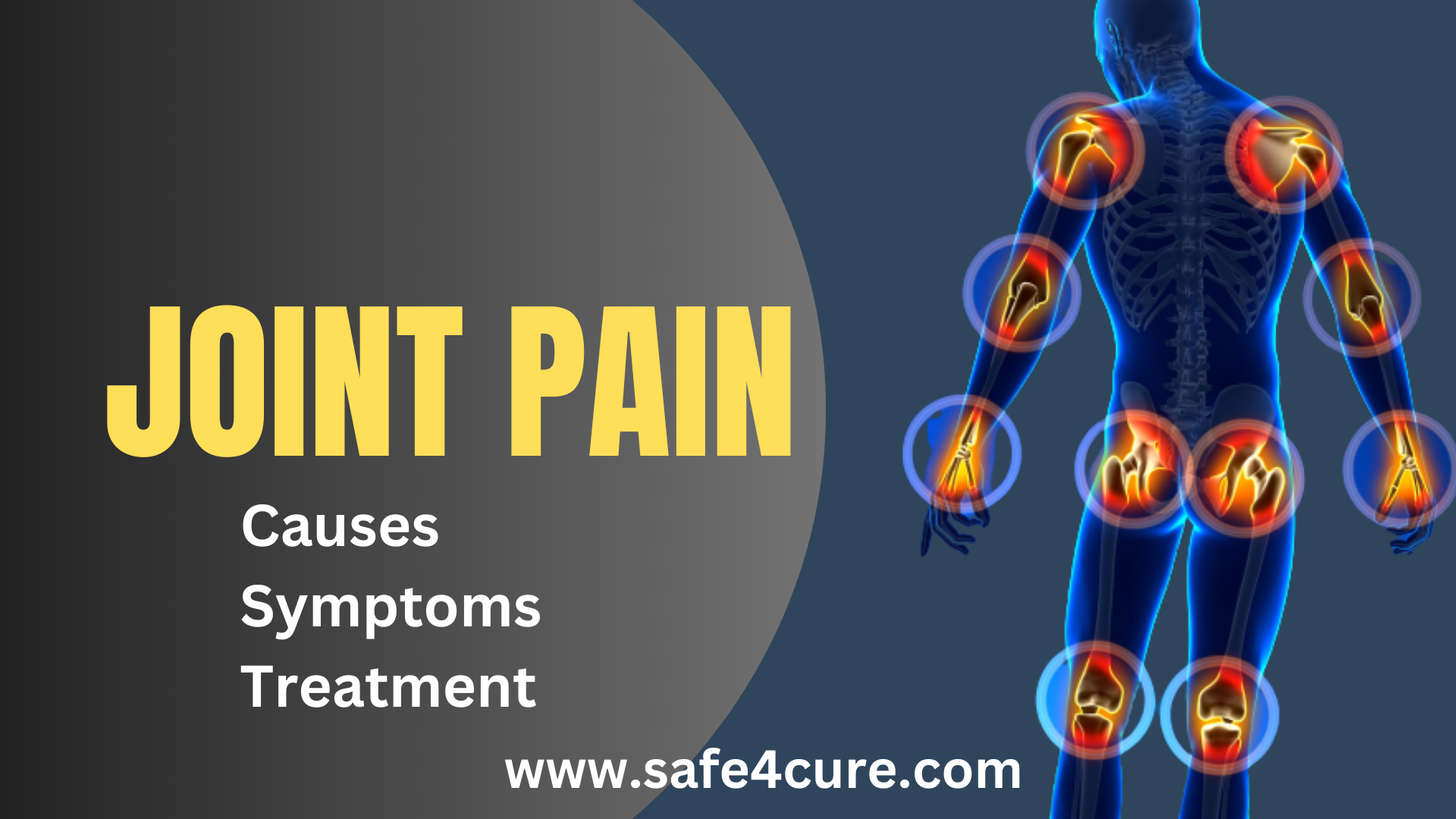Typical locations for common joint pain to appear are the hands, feet, hips, knees, or spine. Pain may be ongoing or intermittent. The joint can get stiff, achy, or sore. A searing, vibrating, or “grating” feeling is described by some patients.
Also, the joint might be stiff in the morning but become looser and feel better with activity. But excessive activity might exacerbate the pain.
Simple tasks can become challenging for someone with joint discomfort, and it may even affect how effectively the joint functions.
Extreme joint discomfort (Best Treatment: Buy Tapentadol Online to Treat It) may have an influence on quality of life. Treatment must focus on the impaired activities and working as well as the discomfort.
What Are The Joint Pain Causes?
- A common kind of disease called osteoarthritis develops over time when the cartilage, which serves as a cushion between the bones, breaks down.
- Joints start to hurt and harden. Osteoarthritis typically develops in middle age and progresses slowly.
- Rheumatoid arthritis is a chronic illness that damages the joints and causes swelling. The joints frequently develop deformities, most frequently in the fingers and wrists.
- Stones from the body build up in the joint in the painful condition known as gout, which results in excruciating pain and swelling. Usually, the big foot experiences this.
- Overuse is a factor in bursitis. Typically, the hip, knee, elbow, or shoulder are affected.
Which Foods Causes Joint Pain?
Foods that have been heavily processed:
Preservatives are used in processed and pre-packaged foods. Such preserved foods may trigger chronic inflammation in the body if consumed frequently.
These meals are typically heavy in carbohydrates and fats and frequently lose vital nutrients after processing.
Red meat:
Red meat has a lot of saturated fat. Advanced glycation end products (AGEs) are formed in the body when meat is heated to a high temperature during cooking.
These are proinflammatory and frequently trigger inflammation all over the body, particularly in the joints and the heart.
Processed sugar and foods high in sugar:
Sugar causes the release of cytokines, inflammatory messengers that lead to joint swelling and inflammation. Different types of processed sugar, such as corn syrup, fructose, and sucrose, and maltose, cause joint pain.
Fried foods:
Fried food has a great deal more salt, fat, and calories. Weight gain results from this, which also puts more strain on the joints. Also, this raises the danger of high blood pressure and heart disease.
Wheat and oats are two examples of cereals that contain the protein gluten. Because of their failure to properly digest gluten, some persons have gluten sensitivity. Infection of the joints and digestive system is brought on by this.
Sacro Iliac (SI) Join Pain In Pregnancy, What it is?
Pregnancy-related SI joint pain is a relatively common issue that can affect either just one SI joint or both SI joints at once.
It is frequently referred to as pregnancy-related low back pain and may already exist before becoming worse during pregnancy, or it may develop as a new complaint at that time.
Sciatic nerve discomfort in the buttocks or down the back of the leg may occasionally follow it. Even though SI joint pain during pregnancy is common, you don’t have to put up with it the entire time you’re pregnant.
You can try a variety of efficient techniques to get rid of it and improve your pregnancy’s comfort. In this article, I’ll go over:
What Are The Best Options For Joint Pain Treatment?
Even while there may not be a cure for the pain, it can be managed to give the sufferer some relief. Sometimes the discomfort can be relieved with over-the-counter medication (Aspadol 100mg & Tapaday 200mg) or just a simple daily workout regimen.
Sometimes, though, discomfort may indicate a condition that needs to be treated with medication or surgery.
Simple at-home remedies, including using an ice pack or heating pad on the affected area for brief intervals several times a day, may be suggested. Warm-water baths may also be soothing to treat it.
How to Sleep With Joint Pain?
It’s crucial to support your lower back while lying down if you experience pain in your joints while trying to sleep.
Avoid flat lying on your stomach or back as this can make your joint more uncomfortable. Finding the best sleeping posture for you may need some experimentation because everyone is unique. But here are some fundamental pointers:
- Lie down on your most cozy side.
- While sleeping, keep one leg bent; relax the painful side backward.
- To correct your spine at night, place a pillow under your arm and a pillow under your head.
FAQs Joint Pain
Is cycling good for is joint pain?
Yes, using a stationary bicycle to cycle can help with joint pain. This is due to the fact that cycling improves the blood flow to your hips and lower back, which helps to relieve pain.
The SI joint is stressed when riding a mountain or road bike for an extended period of time, which makes your pain worse. Even if you peddle harder on a stationary bike, your joints are not put under stress.
What disease attacks all your joints?
Rheumatoid arthritis, often known as RA, is an autoimmune and inflammatory condition in which your immune system mistakenly attacks healthy cells in your body, leading to discomfort and swelling in the areas of your body affected. RA primarily targets joints, typically a number of joints at once.
Can dehydration cause joint pain?
Increases Muscle Cramping: Dehydration can result in muscle cramping and spasms, which can exacerbate joint discomfort.
Joint Damage: Severe dehydration can cause blood volume to drop, which sets off a series of events that cause overall functional breakdown and joint degeneration.
Can too much vitamin D cause joint pain?
Multiple studies suggest that low vitamin D levels may increase joint pain and muscle pain, but the evidence is still beginning.
Given the fact that many people have low levels of vitamin D without realizing it, vitamin D insufficiency can have an impact on both physical and mental health.
What relieves joint pain naturally?
Relieve joint pain naturally:
- Lossing Weight,
- Doing Exercise,
- Applying Cold and heat,
- Acupuncture Practice,
- Meditation,
- Turmeric,
- Massage,




